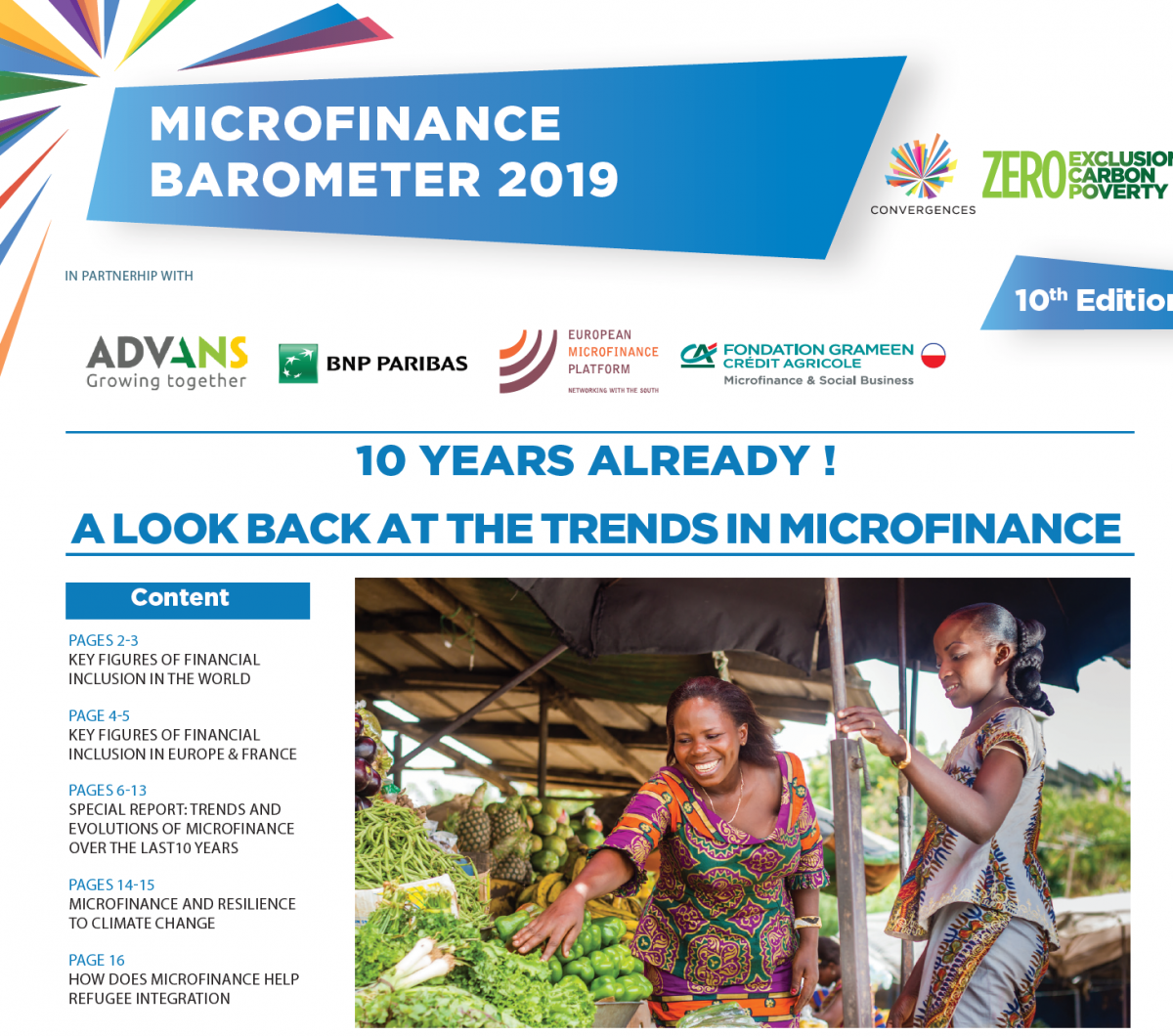e-MFP is a proud partner and contributor of the 2019 Microfinance Barometer which to mark its 10th anniversary, looks back on the evolution of financial inclusion around the world.
 With an average annual growth rate of the microfinance institutions' portfolio of 11.5% over the last five years and an annual increase in the number of borrowers of 7% since 2012, microfinance continues to grow, albeit at a slower pace than in the previous decade.
With an average annual growth rate of the microfinance institutions' portfolio of 11.5% over the last five years and an annual increase in the number of borrowers of 7% since 2012, microfinance continues to grow, albeit at a slower pace than in the previous decade.
While South Asia continues to dominate global microfinance with nearly 60% of the global number of beneficiaries, 89% of whom are women, and an increase of +14% since 2017, the Latin America and Caribbean region alone accounts for 44% of the global microfinance portfolio with $48.3 billion. The markets of Eastern Europe and Central Asia, as well as the MENA region, on the other hand, are more modest, with respectively $5.7 billion in outstanding loans and $1.5 billion in outstanding loans. That said, these two regions have experienced significant growth in the number of beneficiaries at their respective scales since 2012 (30% and 50% respectively).
This edition also reviews the trends that have marked the sector over the past decade. How did the over-indebtedness crises of the 2010's improve social impact management practices? New technologies can improve the performance of microfinance, but how can we ensure that they are used responsibly? What lessons can microfinance teach new actors in responsible finance? What is the future of microfinance in a context where impact investment is growing strongly?
Through case studies, expert analyses and interviews, this edition proposes to review the episodes that have had a profound impact on microfinance and shows how the sector has evolved. Expertise in creating tools and indicators to measure social performance, using new technologies responsibly, diversifying services to include the most vulnerable populations: there are many lessons to be learned from the changes in microfinance.
Read e-MFP's article "(Micro)finance for Resilience: Helping Clients Adapt to Climate Change" on page 14!
Download the Barometer here
e-MFP is a proud partner and contributor of the 2019 Microfinance Barometer which to mark its 10th anniversary, looks back on the evolution of financial inclusion around the world.
While South Asia continues to dominate global microfinance with nearly 60% of the global number of beneficiaries, 89% of whom are women, and an increase of +14% since 2017, the Latin America and Caribbean region alone accounts for 44% of the global microfinance portfolio with $48.3 billion. The markets of Eastern Europe and Central Asia, as well as the MENA region, on the other hand, are more modest, with respectively $5.7 billion in outstanding loans and $1.5 billion in outstanding loans. That said, these two regions have experienced significant growth in the number of beneficiaries at their respective scales since 2012 (30% and 50% respectively).
This edition also reviews the trends that have marked the sector over the past decade. How did the over-indebtedness crises of the 2010's improve social impact management practices? New technologies can improve the performance of microfinance, but how can we ensure that they are used responsibly? What lessons can microfinance teach new actors in responsible finance? What is the future of microfinance in a context where impact investment is growing strongly?
Through case studies, expert analyses and interviews, this edition proposes to review the episodes that have had a profound impact on microfinance and shows how the sector has evolved. Expertise in creating tools and indicators to measure social performance, using new technologies responsibly, diversifying services to include the most vulnerable populations: there are many lessons to be learned from the changes in microfinance.
Read e-MFP's article "(Micro)finance for Resilience: Helping Clients Adapt to Climate Change" on page 14!
Download the Barometer here
Tags Article: